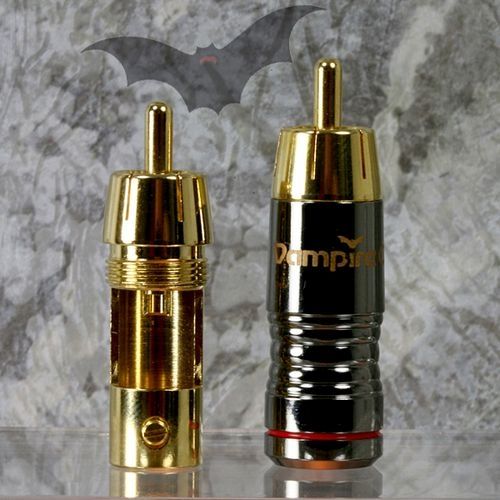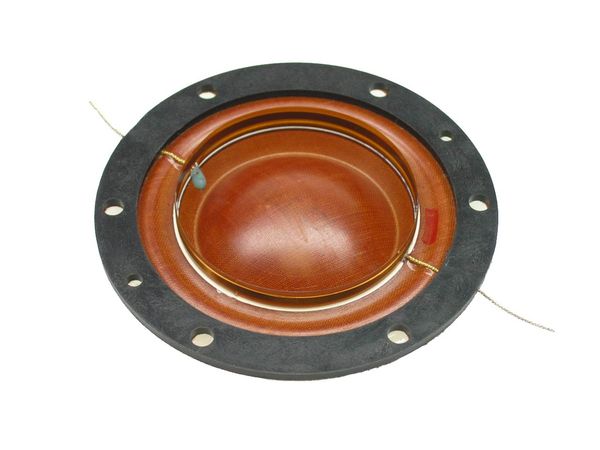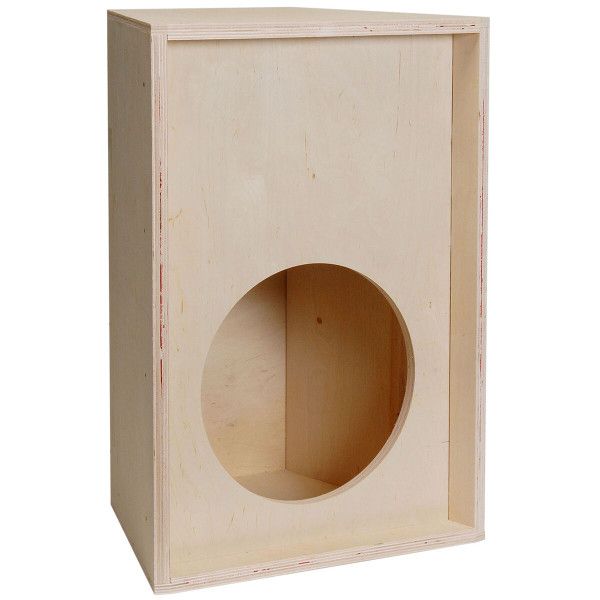-
Posts
5906 -
Joined
-
Last visited
-
Days Won
1
Content Type
Forums
Events
Gallery
Everything posted by JohnA
-
In my experience, cables matter, some, but their differences are subtle. One reason is your speaker cables will normally pass very little power, 1/2 watt or less, so losses are miniscule. This is due to the Chorus' sensitivity. However, since the cost is low (discounting my sore fingers), I use thick speaker cables, about 11 gauge. Mine are hand made braided CAT-5E, but low resistance from 10 or 12 ga wire is most important. My interconnects are moderately priced, but the preamp to power amp cables for the front 3 are silver-clad copper with tight fitting, heavy phono plugs. I use those because I could hear a change in sound I liked. I used those on my turntable, too. They were about $40/meter 25 years ago. The other line level cables and digital cables are similar, but unclad copper and 1/2 the price. The brand is Vampire Wire, but only their connectors are available, now. The cables are unique because the shield does not carry the signal and is only bonded at the preamp end. I recommend you find similar, moderately priced cables because there is some improvement in sound and quality lasts, but beyond a point, improvement costs exponentially more money for another tiny improvement.
-
Yes, and Yes. Baltic Birch is neither light, nor cheap, over here, but it can be had in a void free "plywood", a layered, glued construct that is surely what you called multiplex. Other plywoods can be and have been used in Klipschorns and other Klipsch speakers. My La Scalas are made from plywood with a birch veneer on the top and bottom. I do not know what is in the other layers. I have read it was a void-free product made for Klipsch that is similar to home cabinet birch veneered plywood, like what I have in my kitchen (la cucina).
-
Well, it matters that the visible wood is pretty. It matters that the wood comprising the walls of the horn is stiff, and relatively smooth (vs the wavelength passing). It matters that the wood used is economical, so we can afford the speakers. The species and other details don't matter much, at all.
-

Heresy I E-2 Crossover Capacitor Upgrade Recommendations
JohnA replied to harleyfx's topic in Technical/Restorations
i also use a Heresy I between 2 La Scalas. I modified the Heresy crossover to more closely match the Type AA in my La Scalas. They are much like HIP crossovers. I think it helps the match, but it is still a little off in the mids. It is not noticeable to most people. -
In the rear plys you will find the serial number stamped. The letter code denotes the year, the numbers describe the production number. They are Cornwall Is and most likely had square magnet K-33-E woofers, but the serial number will tell. The cabinet and ports are tuned for the production woofer, but the earlier woofers all had very similar parameters to the mentioned K-33-E.
-
You ABSOLUTELY do not want the walls to vibrate. They should be stiff and non-resonant as they are an "extension" of the bass horn. Horns should be stiff and without vibration in the frequency range where they operate. Your wall should be stiff enough and you have no need for false corners, unless you have no square corners.
-
In the late '60s trucks leaving the nearby manufacturing plant would come through the audio system at church. Thankfully, they followed the rules and did not use profanity back then! It always amused this 10-y.o.
-
Prolly zero. Ruined by the Blose amp. 😂
-
Looks like a DIY using Cornwall I parts. The port and Tweeter are dead giveways.
-
You would not want a "tonewood" because the horns should not impart any sound or resonate in any way. That additional coloration is very undesirable.
-
Partymark, I ran some old Parasound amps with my La Scala HT system. They make excellent sounding gear, warm and smooth. I doubt you will find any integrated amp that will sound better. Integrated are compact and simple without wires everywhere, but all separates traditionally sound better. Nothing wrong with experimenting so you'll know, but my take is that you are dragon hunting.
-
'Deezie, I had a similar problem with some old Parasound power amps. The cure was turning down the amp's input gain controls. Contact Pass Labs. Mr. Pass is well aquainted with Klipsch and horns. I believe they will adjust your amp to reduce or eliminate your hiss. Then, you can keep what I'm sure is a wonderful sounding amp.
-
Klipsch tests every component and/or speaker. In the early days, particularly with the T-35/K-77, it has been said each one was tested and sorted and some sent back. From that, we can infer the better performing drivers MAY have been installed in the more expensive models, like the Klipschorn. There were also different crossovers in the " W" series that may have been an attempt to accommodate driver performance. Only Jim Hunter and Wooly Mammoths were alive back then. 😆. The short answer, now, is a K-77-? and a K-55-V/X and a K-33-? can be exchanged for any other, though there are some subtleties that may make you refrain from swapping some, particularly the woofers. Were you to have enough drivers and the test gear you could cull the lower performing examples, too.
-
The graph published by Mr. Paul in the Audio Engineering Society is this. In my room, mine did not make it much above 14 kHz, but neither do my ears.
-
Should be a good choice! They should pair well with a 2270. That was a transition period and we have nicknamed them Heresy 1.5s. They likely have H II squawker drivers. You'll have to try in your room, but I'd expect them to sound best near a wall, but not too close to the corner (affects male vocals too much). I liked running a subwoofer with my H Is. (If you can hear a subwoofer, it is 10 dB too loud.).
-
You could use the keyholes to attach a bracket that holds them off the wall.
-
What I'd do is put the 4.2s in the front, put the 4.5s as rears, use the R14ms as rear fills (or in another room for stereo) and spend my money on 2 or more subwoofers. More sub's means less distortion and more even coverage in the room, not the mention the power available when the depth charges go off!
-
While the magnet could shift and ruin a compression driver, normally, the voicecoil in the diaphragm opens and the fix is easy for a trained tech. It is equal to reconing a woofer. NB: the K-55-V/X and K-55-M diaphragms are quite similar and some have said the -V (Atlas) diaphragm can be modified to fit a -M, they are NOT the same. $200 sounds like way too much for a K-55-M. Newer tweeters that flush mount the tweeter mouths will be a nice upgrade. You will hear that. Send me a PM. Listen a while once they're fixed. At that age, they may be ready for new capacitors. La Scala's are not polite and "laid back". They live and breathe in the room with you.
-

1977 Lascala. Reinforcement of the side walls.
JohnA replied to KT88's topic in Technical/Restorations
Inside braces, offset a little, make the most sense from the engineer's point of view. Second is to add 6mm or so to the outside of the sides of the bass horn. The addition must be fully glued and should be anchored with a few screws or nails so it fully bonds to the horn walls. That's a lot of weight for the improvement. The rest of the bass horn is well braced and needs nothing added. Had I realized, I'd have added the inside braces before finishing. Since they don't misbehave until I recreate a rock concert, I don't worry about the resonance. I did have a 19mm x 19mm strip of solid cherry added to the front edge to cover the edge plys, maybe that helps. -
Yup. That's why Heresies, Cornwalls, Belle Klipsch, Fortes, Chorus, Reference Premier, Reference and Synergy, at least, are raised off the floor with a cavity and/or feet. You know, the 5th law of robotics!
-
A real Garage Sale! I bought a pair of Birch cabinet kits from Parts Express for PA speakers. Well, the need and usage has disappeared and I've had these taking up space in my climate controlled garage for years. Time to go. Included is a pair of steel mesh grille covers. The kits are cut for a 12" woofer and have plenty of room for a K-700 to make a 2-way Pro Heresy-like speaker. They are made from 13-ply Birch. https://www.parts-express.com/PA-Knock-Down-Trapezoid-Plywood-Speaker-Cabinet-for-12-Driv-245-324?quantity=1 They are nor currently available and may or may not be offered again. I waited several years to find these, again. they are still in the original PE shipping boxes. $225 shipped to CONUS.
-
Important? Sure, it's a boundary layer that reflects bass energy, but a few inches are irrelevant. The Klipschorn's bass horn works a little differently, the walls and floor are an imperfect part of the horn. The mass of the Klipsch "Big 3" negates the need for spikes and heavy stands. The moving mass of the woofer is so small in relation to the speaker, it will not cause cabinet movement. The old Rat Shack Mach 1 was a perfect example of light cabinet/heavy woofer needing an anchor.











